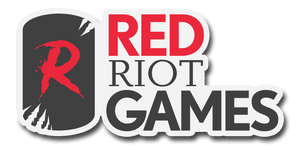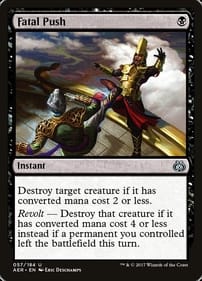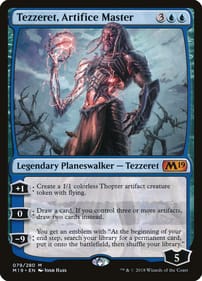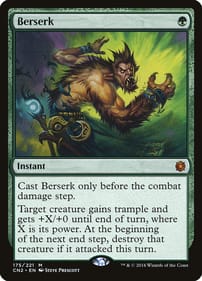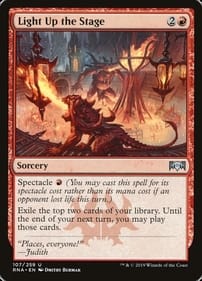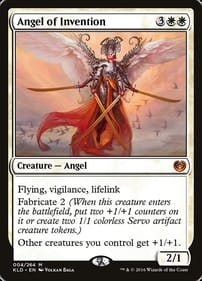Considering Charge: Exploring Alternative Resource Mechanics in Flesh and Blood
By Dimos Last week we took a dive into the alternative resources that make Dromai a strong hero in Flesh and Blood. This week we are looking at the opposite side of the alternative resource coin: Boltyn. He has been historically plagued by needing a card each and every turn to Charge in order to make him operational. Some commentators have likened this to a perpetual Intellect penalty, like Data Doll. I don’t quite agree with this evaluation, but Boltyn definitely feels short changed in the cards-per-turn economy. Let’s take a look under the hood of Boltyn’s unique resources and see how the numbers shake out. Boltyn’s resource math is much simpler, or at least has fewer variables, than Dromais. Each card in his soul represents either one instance of Go Again (worth about 1.5 points of value), or one damage (from Beacon of Victory). This is the only alternative resource he can move from turn to turn, unlike Dromai who can move all of her resources across turns. Additionally, Boltyn’s ability to use multiple resources carried over from previous turns effectively is heavily limited. Dromai naturally carries over the value of each existing dragon, whereas Boltyn can only give each attack Go Again once per turn. Add in the requirement that one card go to Charging for the turn, and Boltyn’s options grow thinner. With Dromai’s ash having a value of nearly two resources for each token, and dragons holding their combined attack and health value, Dromai has sticking power across turns. The buffs that Boltyn receives from having Charged in a single turn are generally restricted to the text on his cards (and therefore limited to what is in his hand at any time). The exception to this is his conditional power buff, which struggles to provide more than two points of value on a turn where it is active. His cards do become much more powerful after he has charged, threatening card draws, intense amounts of damage, or extreme resource efficiency. What this results in is an alternative resource system that ends up almost as binary options: Do I have a card to charge this turn, and if so, do I have enough soul to unlock the full text of the cards in this individual hand? The only saving grace of Boltyn having to operate within these limitations is Beacon of Victory’s ability to search for any card he would want. But even this power is still largely limited to a single turn. The addition of Bannerets has given some incidental value to Boltyn’s charging, making them a strong value proposition when things line up. However, the fact that he is limited so severely by not effectively carrying resources across turns, while those resources also cost a card from hand each turn, make it a challenge for him to be as consistently powerful as Dromai. With that said, he does have much more explosive potential, albeit exclusively through the use of Lumina Ascension and V of the Vanguard. Now that we have looked at the difference between Dromai and Boltyn’s resources, we can see the recurring theme that being able to move power across turns is much stronger, as it allows for repeated presentation of value. Consider a brief thought experiment: What if Dromai had to put a card from hand face down under each dragon she made (except Aether Ashwings), just like Boltyn has to do to charge? Let’s also assume that each dragon now has a reduced resource cost. The one-cost dragons, which are generally lauded as being “ash neutral” would make sense to cost zero in this scenario, as the red card you normally pitch to pay for them and generate the ash is now under our dragon. Putting a card under the dragon instead of ash leads to very similar outcomes within an individual turn. However, it makes it much harder for Dromai to set anything up or build a large board to snowball the game. She loses the ability to ever summon three dragons in a turn, and she would find herself fatiguing very quickly instead of pitching strong red cards to come up in a second deck cycle. She also loses the ability to stockpile Ash for back-to-back power turns. The above scenario is worse for Dromai in nearly every way. In a lot of ways, this is what Boltyn has to deal with through his Charge and soul mechanics. Consider a corollary thought experiment where Boltyn adds a token card to his soul every time he pitches a yellow card. He begins to feel a lot more like Dromai, and he feels so much smoother. I think there is a “walk a mile in others’ shoes” lesson to be had here. Having played these modified heroes across my kitchen table, it shows how much impact small design changes can have. As the above scenario highlights, the fact that Boltyn loses a card each and every turn stings and can hamper eventual payoff turns. While combo pieces and in-turn investments are very crucial for tide-shifting turns, you don’t want to make that investment every turn. Energy Potion is one of my favourite cards in this game, but I acknowledge that it is a very situational card that exists to solve specific problems and go over the top in certain matchups. But no one wants to play an Energy Potion each and every turn to power their deck’s engine. Sometimes that’s what Charging a card feels like, but it is almost never what pitching a card to make an Ash token feels like. Because of the design-based nature of this alternative resource tension, I’m not sure that any amount of buffs to Boltyn (through Bannerets or other incremental means) will solve this issue. He can certainly become an insanely powerful hero through the Ranger treatment, by printing enough standalone power cards to overcome the weakness of his alternative resources. Give him Twomina Ascension, which can just be a fourth, fifth, and sixth copy of Lumina Ascension in his deck, he would become a very powerful hero. Overall, I think that ash as an alternative resource is a much more elegant and flexible resource system than soul, and it is no surprise that Dromai is a more powerful hero than Boltyn because of this flexibility. I haven’t talked much about the design elements of ash against soul, but it is the multi-turn design, and token nature of ash that allows it to function so much more smoothly across a dynamic game, with a constantly evolving strategy, than soul can. Boltyn basically has to commit to his strategy when choosing which weapons he presents: a build-up to a one-turn killer combo with Cintari Sabres, or a continuously aggressive strategy with Raydn. From a rules perspective, there are some elements of ash that can be confusing or unintuitive for those without a judge certification. The main example of this is the creation of ash from Dromai’s ability being too late to use as a target for a dragon being made, but not too late to use to make an Ashwing from Rake the Embers. However, once a player understands this odd interaction, the smoothness of the ash mechanic returns and becomes a fun management puzzle throughout the game for Dromai players.
Ash Analysis: Exploring Alternative Resource Mechanics in Flesh and Blood
By Dimos In Flesh and Blood, there are three main resources that you use each turn: the cards in your hand, your action point(s), and the resources generated by pitching cards. There are also peripheral resources like life, the number of cards remaining in your deck, and your usage of equipment. Juggling all of these throughout the course of a game is often challenging enough without introducing more complex management mechanics. Currently, there are four heroes who exemplify this in game. Levia has to manage her graveyard for a high density of six-power attacks, Dromai has to manage her ash, and Boltyn and Prism, Awakener of Sol both have to manage their souls. Levia’s management changes as the game ebbs and flows depending on what hand she draws. Prism’s management is quite binary – if there is a single card in her soul, she can generally do what she wants. Many of the uses of her soul rely on a card having been put into her soul, usually resulting in a net-zero scenario. Boltyn and Dromai, however, have much deeper management mechanics in my opinion. This pair of articles will dissect how these bankable, usable resources have similarities and differences, and why ash is an inherently stronger mechanic. Ash being a stronger alternative resource mechanic is also part of the reason why I think Dromai has seen so much more success than Boltyn, as I will discuss next week. For today, we’ll take a dive into the numbers behind Dromai’s dragons and ash. In order to evaluate the differences between these two resource mechanics, we have to take a look at some of the numbers. We’ll start with Dromai and ash. The easy math on ash is that it should be worth about two points of value. Ideally one wants to pitch blue cards, generating three resources, instead of red cards, which generate one resource and an ash. Therefore, in order for one resource and an ash to be worth three resources, an ash should be worth two resources. But the great thing about ash is that it lasts until it is used, functioning almost as a more restrictive Energy Potion. Being able to develop a permanent board state for later use is generally a good tool to have in this game, as I’ve discussed previously. Moving on to Dromai’s dragons, which are all permanents (stay in play until they’re killed), have Phantasm, a health value, an attack value, and usually have Go Again. Phantasm generally allows a card to get two more points of value than would normally be allowed. Comparing Brutal Assault and Enigma Chimera shows us a clear example of this in its base form. Each dragon’s health value effectively represents damage that is being redirected from Dromai to the dragon, functioning as life gain (unless Phantasm is triggered). Each dragon’s attack represents stacking damage each turn since Go Again is so readily available to them via Dromai’s ability. This leads us to three different scenarios for our dragon math: a dragon is destroyed by Phantasm, a dragon is killed by opposing damage next turn, or a dragon is let to live for two or more turns. Let’s examine two different dragons for this purpose: Azvolai and Kyloria. Azvolai costs one card and one ash to play. In our first scenario, you receive one card from your opponent if it is popped by Phantasm. When this happens, you are now down an ash but otherwise even. If Azvolai is allowed to attack, it will deal three damage, and demand three damage to kill, effectively being worth six points of value from a single card and an ash (great value!), and it has Go Again, allowing you to extend that value further. The six points of value mentioned above assumes that you have nothing to use your Go Again action point on and is assuming your opponent has exactly three damage with Go Again on their next turn. It is worth more if they do not have that perfectly efficient play. If Azvolai is left to survive for anything more than one turn, it becomes worth an additional three points every turn and quickly gets out of hand. Kyloria costs one resource, one card, and an ash. However, if you pitch a red card, Dromai’s ability makes an ash, meaning Kyloria usually costs exactly two cards. For those two cards, you get either one card to trigger Phantasm (a net negative), six points of value at minimum between its attack and health (not terrible), or a continuously scaling value of four damage and potentially drawing a card every turn (fantastic once again). This math can get even better when you factor in the Phantasm-avoiding dragons like Miragai or Cromai. In short, all of Dromai’s dragons can create board states which easily spiral out of control unless the opponent has specific and efficient ways to deal with them. This is also thanks to the Luminaris-like effect of Dromai’s hero text. All of this value advantage comes from the fact that ash and dragons both have the potential to last multiple turns. This multi-turn value that oftentimes provides efficiency the first turn that it is played is a unique advantage for Dromai and allows her to compete at the top of the FaB meta right now. Without a six-power attack to trigger Phantasm, each of Dromai’s dragons becomes a good standalone play within any given turn cycle and quickly becomes some of the most efficient value-based plays in the game if they remain unanswered. The drawback of Phantasm is very real for Dromai, as it also removes Go Again from her dragons when triggered, shortening the turn and reducing the value of that cycle. However, if Dromai can manage to set up a turn where she can create three dragons, even if Phantasm is triggered, her remaining dragons still require answers from the opponent. Any time I am playing Dromai and I have a three dragon turn, which usually happens about once a game, even if Phantasm is triggered on one of them, I am happy having two bodies still on the board. This often nullifies my opponents entire next turn, leaving the door open for a strong play from me next turn. Initially, I did not think that Dromai’s playstyle would appeal to me in constructed formats, as it seems somewhat antithetical to the direct combat and back-and-forth elements of Flesh and Blood. However, introducing the alternative resource mechanic and an entirely new axis on which to evaluate card value have made it an enjoyable deck for me to play. I recommend trying her out if you never have before, if only to learn some good tricks against her. With all of this said, I do think that Dromai does have many dull matchups that frequently feel like non-games because she can have such a large advantage against classes without natural Go Again who do not use six-power attacks as resource cards. Next week, we will look at the thankfully-simpler math behind Boltyn Charging his soul and compare these two resource systems. As a spoiler, I will say that I think Dromai’s ash and dragons are stronger because they last across multiple turns, whereas Boltyn struggles to carry any earned advantage between turns. We’ll also consider how slight tweaks to the design of these mechanics can radically change how they operate.
Grand Archive Store Championships
As we wind down to our final days of the current set of Grand archive, our fire champion makes what could be the last run of the fire Lorrain deck. Who better to show off how strong this character is than our very own top 8 reginal placing player Alessandro Venditti!!!! Here is his event winning deck https://build.silvie.org/@Dezmu/cSYGJGOx687JAtG1YApG
Grand Archive Regionals Results
We are happy to have had the privilege to host the first regionals in Canada. With that said there were 113 players in this event. Making it the largest event to date for Grand Archive in person! We hope to see more events in the coming months and years. We also hope to put on our own events at these events and have the strongest players show up! Here is your top 8 Deck List from this event 1st: Alex Chong https://build.silvie.org/@Dezmu/OUSvJvbnKKyLRbohrjcF 2nd: Stephen Man https://build.silvie.org/@Dezmu/us8OwrANmhLihoJVL98J 3rd: Eason Chen https://build.silvie.org/@Dezmu/doBeLWEITXV4wTnpTV2M Matthew Vo 4th https://build.silvie.org/@Dezmu/7EqHLUN9l4dMnapuhmNm Cem Mtlu 5th https://build.silvie.org/@Dezmu/1seoT90iadcZzs9DdxLu Richard Ng 6th https://build.silvie.org/@Dezmu/fJz3yMUf6BlcQUcNIJtA Alessandro Venditti 7th https://build.silvie.org/@Dezmu/cSYGJGOx687JAtG1YApG Richard Dinger 8th https://build.silvie.org/@Dezmu/1syqY1d7iJmNhaw88Coy Meta Break Down
A Cubed Set Structure and Fun Cards in Dusk Till Dawn
By:Dimos Now that the new set of Flesh and Blood has been released, we’ve seen a whole host of extremely exciting cards almost exclusively for four heroes. However, I think I will leave how those cards upgrade and define their decks to hero-specific experts. Instead we’ll be talking about the structure of the set and some of the broader-use Generic majestics, because there’s always some fun to be had with those. I also want to talk about the structure of this expansion set as a whole. It’s almost draftable, but not quite. My first take on this is that it’s great to augment a cube with, as I explain below. The structure of this set is very interesting. As our first taste of the set, we were shown a suite of specializations for half the heroes in the game who then promptly received nothing else from the set. Every card after that initial suite of lore-tied specializations was heavily tied to the four stars of the set (Boltyn, Levia, Prism, and Vynnset). Because of this, many people have been speculating that this set was originally supposed to be a draft set. I’m not quite convinced of this argument because of the lack of interesting sub-archetypes within the set. In addition to Light and Shadow cards, Monarch had cards that cared about high or low base power. In Dusk Till Dawn, there really isn’t a second axis on which to draft. Most cards in this set are specifically targeted at making or improving how Boltyn, Levia, Vynnset, and Prism play. And overall, this flood of specific cards seems to work fantastically for the classes that it impacts, while leaving other classes out in the cold. I don’t think it’s possible for FaB to continue supporting every hero and class in every expansion from this point forward, but I think this set was handled well. Those classes who did get served got served fantastically well. Levia and Boltyn had life breathed into them after a lot of stagnation since their release, and the Light Illusionist and Shadow Runeblade card pools got fresh heroes in the form of new Prism and Vynnset. I think this concentrated refresh will have an overall greater impact on the game than giving a half-dozen cards to every class, many of which may not even see play, like we saw with Dynasty. The almost-draftable nature of this set also gets me excited for an entirely different reason, other than the fringe uses of some of the more mediocre Shadow and Light talent cards. What I’m particularly keen about is how these extra cards provide ways to fill in the gaps in a Monarch or Light and Shadow cube. For those unfamiliar, a cube (or cube draft) is a fixed, curated set of cards that can be drafted repeatedly. What you lose in randomness, you make up for in replay-ability, a custom experience, and cost savings of not having to crack a new box each time. Personally, I am a big fan of the work that the good folks at OK&Y have done in the FaB cube space. You can find information on their Midwinter cube, starring Ice, Wizard, and Ranger cards here. They also have a Bento Box cube featuring Katsu and Ira, which is a perfect, easy-to-build two-player experience that I think evokes some of the best parts of the back-and-forth nature of FaB. I am a massive fan of this particular cube, and I encourage everyone to give it a go. With these new Light and Shadow cards and the upcoming Monarch drafting season, I think that we will have multiple groups of people building up their own custom light and dark draft sets. I think there are a lot of fantastic ways that this could be built, with options for both Light Illusionist and Shadow Runeblade heroes that draft fundamentally different from one another, and a good mix of Monarch, Dusk till Dawn, and other support sets. I know I can’t wait to get my hands on the new cards to start crafting something replayable and unique. Cards like Vile Inquisition and Grim Feast can open the path for a slower style of Shadow play, while cards like Lay to Rest provide Light heroes with meaningful disruption against their Shadow foes. I also look forward to what others come up with. To get a bit more into the specifics of the set, let's look at our new Generic majestics, starting with my personal favourite: Mischevious Meeps. This card is, on the surface, not amazing or game breaking, but has the very powerful effects of both drawing a card and having go again. I think there will be some applications in Benji, and an argument for it in aggressive Dromai decks, along with some other marginal cases. However, the second I saw this card I immediately thought about building a whole deck around Meeps and their fellow low-power-but-interesting cards like Give and Take, Overload, Adrenaline Rush, and Fractal Replication. All of these can be paired in neat ways with Transmogrify and Phantasmify to make them too big to ignore. The deck I’ve put together can be found here, and I have to say that it is surprisingly not terrible and a good bit of fun. Hack to Reality is exactly the card that needs to exist to get around Spectra (and other long-term Auras) if your deck can’t naturally deal with them. I think it is finally time to have an answer to Spectra that isn’t actively card-negative. Previously, the only generic answer to Spectra was Lead the Charge, which cost two cards to destroy an aura and continue your turn. This was always a losing proposition because the aura you were destroying was actively creating value for its controller while destroying it did not create any benefit to the attacker. The fact that Hack to Reality provides a two-attack boost in addition to destroying an aura parallels the benefits that the auras provide, and gives some much-needed upside. There are also some uses to be found in destroying certain combo Auras like Insidious Chill if Iyslander is trying to create a Frost Hex and Ice Eternal endgame combo. However, Hack to Reality comes at a significant deck building cost, being a two-block yellow, which is generally the worst of both worlds. Consequently, you’ll have to be very certain that you need this card before you put it into your deck. Another tech card that’s cropped up is Hold the Line, which has a relatively low deck building cost as a blue that can be played at reaction speed. It has a tremendous upside against any deck that runs Art of War, Tome of Fyendal, or Three of a Kind, all of which are currently seeing use in a lot of top decks. The question remains if having a two-block blue is worth it on the turns where it doesn’t block for five, which can probably only be found out through testing. Warmonger’s Diplomacy is probably the card with the lowest opportunity cost of these Generics, as it is a blue that blocks three. I’m sure that there are a lot of niche uses that this card can provide, as it can shut down nearly every non-Ninja combo currently in the game, but at the cost of a card and an action point, and only for one turn. This card reminds me of This Round’s on Me in how it will find its niche. Our last Generic is Poison the Well, which is interesting but has extremely narrow use cases currently. This strikes me as a card that is necessary to exist in any card game. If an opponent can gain life, then it should be possible to counter said life gain somehow. Maybe we see some future life gain hero that this could be actively good against. But for now, it’s probably just a fun play against Sigil of Solace. Maybe you’re a Ninja who has someone low on life and locked down with Kodachis, and they try to break out of it with Sigil of Solace. Then you can play this to confirm your win, it is a blue zero-cost that turns Kodachis on, after all. Finally, I want to write a few words about Levia. She got so many perfect tools in this set that really address a lot of her defensive utility issues I talked about recently. Everything that she could have asked for has arrived, and then some. Her lack of defensive utility is now completely addressed as she has not one, but two immediate fallbacks for when she is in a precarious position. Both her new Redeemed/Consumed card and Hell Hammer can both get you out of jams and create a whole bunch of alternative strategies. I am very excited to see how the decks get built around these new cards and if they are strong enough to help Levia face some of the more disruptive Ice decks, which she has historically struggled with. Overall, I find myself much more excited for Dusk Till Dawn than I was originally expecting to be. I haven’t cared much about Light Illusionist and Shadow Runeblade in the past, so the run-up to spoiler season didn’t have me champing at the bit. But the unexpected amount of love for Levia and Boltyn, combined with the cards that look like they’ll round off a Light/Shadow cube very nicely, has me very much on board. Plus, Star Struck is in this set and that makes me very excited for Bravo, my original passion in this game. Can’t wait to get my hands on all these cards and start jamming some games.
Utility in Defense in Flesh and Blood Part Two: The Weaknesses of Inflexibility
Utility in Defense in Flesh and Blood Part Two: The Weaknesses of Inflexibility By Dimos. K Last week, I discussed how the added defensive utility of the new Unity specializations bring a different dimension to each hand when they are drawn, and to the deckbuilding process as a whole. In Flesh and Blood, options, and cards that do multiple things well, are synonymous with power (see Enlightened Strike and Command and Conquer as two controversially-ubiquitous examples). In sharp contrast to options, lets have a bit of a chat about Levia this week. She’s a hero who has so many of her defensive options taken away from her by virtue of her card pool and hero ability. I have a soft spot for Levia, I think her decks are very fun to play in any format, but none more so than in draft. I think she has a lot of interesting deck building options, from her traditional beatdown aggressive style to a slower, value-based style. This value-oriented style is my personal favourite, and I detail it towards the end of this article because I don’t think people are giving her the credit she deserves in limited. Levia is generally written off by large swathes of the community because of how many different resources she has to manage. And for generally having too many downsides, many of which lead players to lose the game on the spot. Fundamentally, what Levia is missing in draft and sealed is defensive utility. She loses defensive utility because of how her card pool spreads her so thin across many different resources. Levia needs six-power attacks to interact with her hero power and Brute card abilities, she needs to manage the number and nature of cards in her graveyard, deck, and banished zone simultaneously. While doing all of this, she also has to deal with pitch ratios like every other deck. There is a natural ebb and flow in every game of FaB as players draw perfect hands, strong hands, or borderline-unplayable hands. It is within this variance where you want your deck to have defensive utility. If your opponent draws the ideal hand, you may just have to block with everything to deny their on-hit effects. If you draw a terrible hand, the most efficient thing to do may be to block with most of it. Losing key aspects of this axis can put you in a very awkward position, and you had better hope that their offensive capabilities more than make up for their lack of defense. Many of Levia’s cards cannot block. Deadwood Rumbler and Smash with Big Tree are Common staples that have the required six power. Majestics such as Shadow of Blasmophet and Deep Rooted Evil, which can offer her conditional offensive utility, also do not block. Already, Levia has lost the ability to defend how she wants. One would expect a hero who needs to fill her graveyard to be able to do so via blocking flexibly and effectively, but with so many non-blocking cards, Levia is forced to do so by playing them or discarding through her Ravenous Meataxe. However, her main lack of defensive utility comes from the Blood Debt that she stacks into her banished zone over the course of a match. Sometimes in FaB you just need to throw your whole hand on the table to block, pray you live another day, and try to claw your way back afterwards. Levia has challenges with this, because if she is left with fewer than two cards, she is almost guaranteed to take a substantial amount of Blood Debt damage. These issues hold her back in both constructed and sealed formats, and certainly pose challenges in the draft format. However, I do think she is much more capable in draft than in any other format. I find that when playing Levia, there are so many decisions to be made, so many odds to be weighed, and so many different lines to take in each hand and through different match-spanning strategies. She is my favourite hero to draft in Monarch for exactly this reason. She also tends to be under-valued by other players and it becomes quite easy to get her nearly-mandatory and incredibly powerful Hooves of the Shadowbeast footwear. Take these following tips as an invitation to draft her in your upcoming prereleases or at your national tournaments. Levia decks can be very rewarding and deeply interesting at any skill level of draft provided that you have a game plan. I am by no means the world’s foremost expert on Levia, so I advise you to seek out further information such as this great piece. As I mentioned previously, something that I do not think is discussed often enough in draft Levia is a low-Blood Debt or value-based engine. The main goal of this deck is to try and mitigate Levia’s lack of defensive utility. I don’t think that this is the strongest possible Levia deck, but it can be very strong and has taken me through at least a couple of undefeated draft pods. For most of the game, you are trying to force as many back-and-forth two-card hands as possible. This is something that other heroes in the format generally cannot best Levia in, unless there is a profoundly strong Chane deck. Red Deadwood Rumbler makes for some of the best two-card hands in the set, threatening eight-damage and providing an advantage against other Shadow heroes. By lowering the amount of Blood Debt in the deck, Levia also has access to powerful generic hands with Warmonger’s Recital and any two-cost attack such as Stony Wootenhog or Adrenaline Rush, since she is not always racing to activate her hero ability. The key to these decks are cards that can be played from her banished zone. Ghostly Visit, Void Wraith, and Howl from Beyond are amazing, and Levia can use them to build her own very powerful and efficient weapon in a format without powerful weapons. In this value build, Unworldly Bellow is also a key player, as it works perfectly with Void Wraith – dealing nine damage with only two cards in hand - while cycling another Void Wraith or Ghostly Visit from your graveyard into your banished zone for next turn. Unworldly Bellow also adds some of that key defensive utility to Levia. It is a card that blocks three while not being an attack action (excellent against Boltyn), and it contributes well to modular hands. I discussed the importance of modularity, and being able to turn your strong four-card hand into a strong two-card hand when pressed to block here. These are all key aspects to a value-centric engine that seeks to mitigate Levia’s lack of defensive utility. Add in a couple of Rally the Rearguards or Ironhide pieces to make your non-blocking cards block when you need them to, and your Levia deck is flying. Most importantly, your Levia deck is powerful and efficient without requiring cards that everyone else is desperately fighting over, like Dread Screamer. There are a few exceptions that you will have to fight over, as I do believe that Levia decks will always need Hooves of the Shadow Beast and Ebon Fold. This type of deck is one that is not without its risks, since it is still Levia, but I have found it to be a great deck to steal draft armory wins with – even if you don’t manage to get a single Dread Screamer. Generally, this deck also needs some type of closer, but a single Convulsions from the Bellows of Hell is normally more than adequate, especially when played after a high-pressure turn fueled by Hooves of the Shadow Beast. Even on a build with less Blood Debt, you will still have some Brute cards with Blood Debt, and you will carefully have to manage them like you would with any other resource in a Levia deck. Overall, Levia has some of the best closing power in the game, through the aforementioned Convulsions, big Hooves of the Shadowbeast turns, Writhing Beast Hulks, her signature Soul Harvest, or even fatigue through regular Unworldly Bellow and Void Wraith or Ghostly Visit pressure. With all of this in mind, I think it is important to remember that Levia can be immensely powerful in the long game, so long as you can keep alive throughout the process, in spite of her lack of defensive utility. I encourage everyone to give her a try in draft, and even if you don’t like the playstyle, you’ll at least learn how to better play against her.

